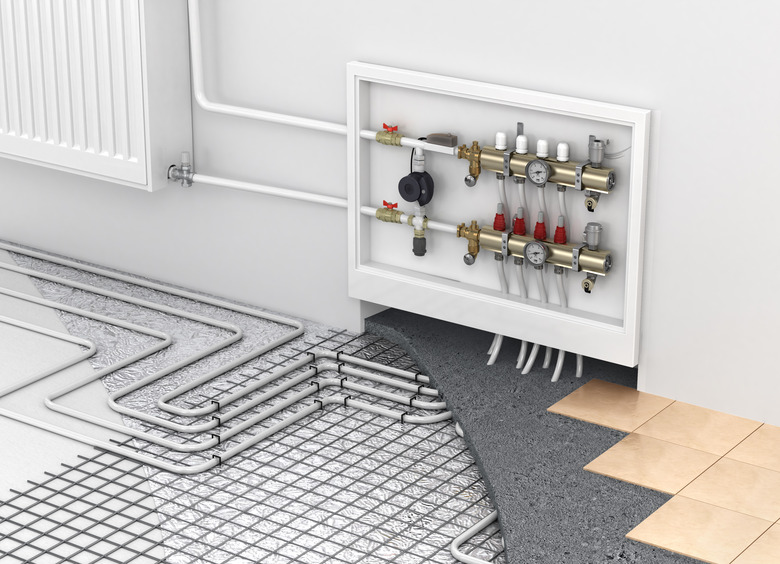How To Troubleshoot A Honeywell Zone Valve
Honeywell zone valves offer the flexibility to regulate temperature in a home serviced by a hydronic heating system. A thermostat mounted in each desired location controls a specific Honeywell zone valve. When the thermostat calls for heat, the zone valves opens and turns on the water circulating pump to allow water flow to the area. At the same time, the zone valve sends a signal to the boiler and starts the burners. Warm water will only flow to the zone or zones indicated by individual thermostat. Multiple thermostats can control multiple zone valves, each one operating independently of one another.
Honeywell zone valves are composed of two main components. The brass valve body, which is soldered into the water lines, and contains the mechanical moving parts of the zone valve. The valve head contains the electrical components and the wiring terminals. The valve head can be removed and replaced independently of the valve body. If your repair requires only the valve head be replaced, you can put the valve body in place and snap a new head on to the old valve body. Not having to replace the valve body means not having to solder pipes, drain the boiler and purge air back out of the lines.
Be careful. Any shorted or crossed low voltage wire can burn out expensive controls such as the boiler's ignition system, gas valve, pump and safety controls.
Things Needed
-
Pliers
How to Troubleshoot a Honeywell Zone Valve
1. Identify the Zones
Determine which zone valve operates the area in question by process of elimination. Use the other thermostats to operate the zone valves until you have determined what thermostat controls what zone valve. Label each zone valve appropriately for future reference if further troubleshooting is required.
2. Listen for Potential Problems
Listen to the operation of the other zone valves. Listen to hear if the zone valve in question is noisier than your other valves. Listen to hear if the zone valve in question is completely quiet compared to the operation of the other zone valves.
3. Turn Up the Thermostat
Turn the thermostat in question up several degrees over room temperature to turn on the zone valve. When you return to the boiler you now know for certain the thermostat is calling for the zone valve to operate.
4. Remove a Malfunctioning Valve
Listen to hear if the zone valve is making noise, or is making too much noise, and not opening the valve. If so, then turn off the power to the boiler system. Press the tab beneath the zone head to allow you to twist the valve counter-clockwise and remove it from the body. Be careful of the wiring.
5. Manually Test the Valve
Use your pliers to lightly move the stem sticking out of the center of the valve body back and forth. The stem controls a small paddle which opens and closes, controlling water flow. If the stem moves freely, then the valve body is okay. If the stem is hard to turn, or won't turn, then replace the entire zone valve assembly.
6. Test the Valve's Response
Set the valve head gently somewhere so the electrical terminals are not touching metal. Turn the boiler switch back on. If the valve head still chatters, then replace the head. If the valve head receptacle does not move as if opening the paddle, then replace the head.
